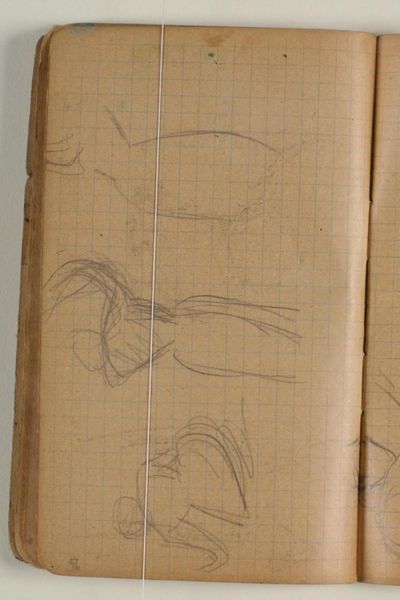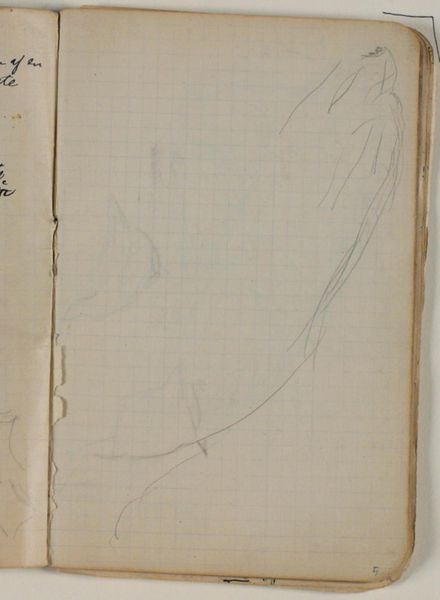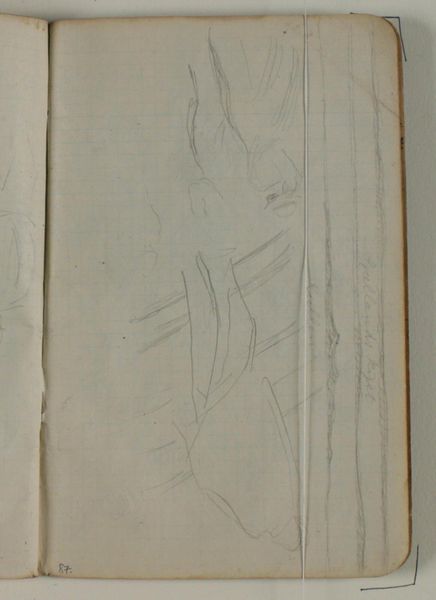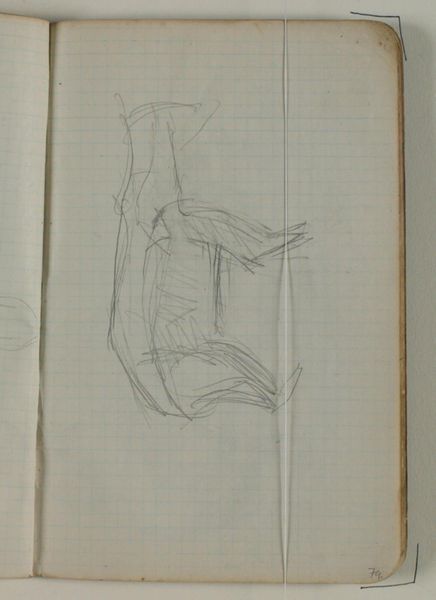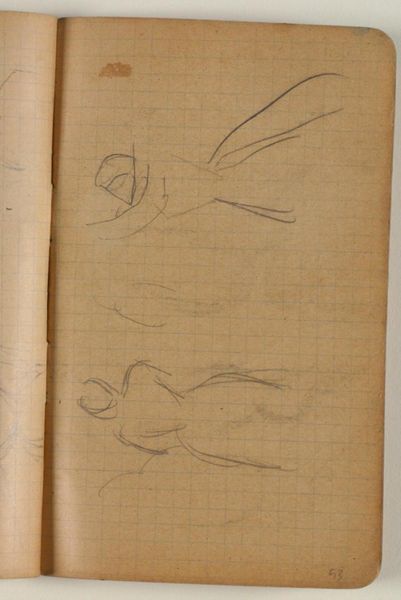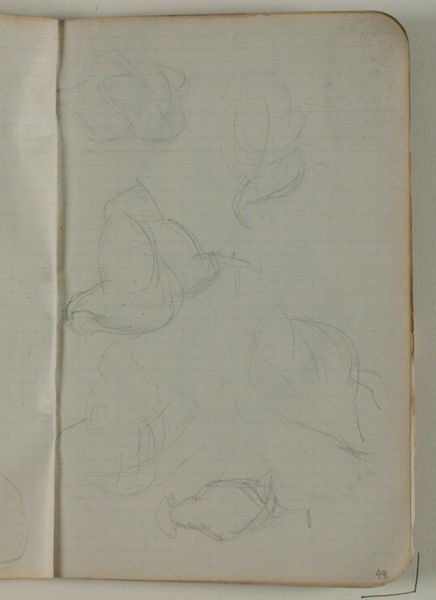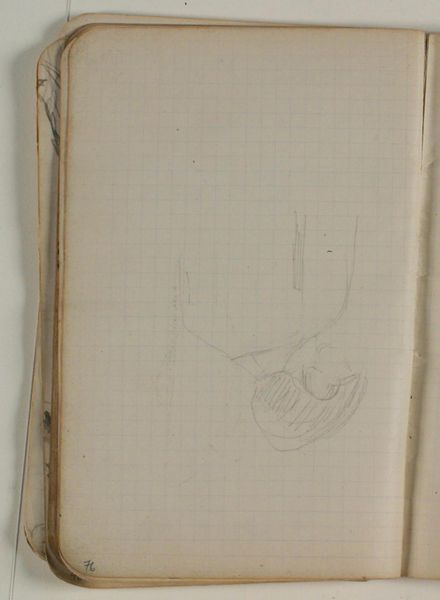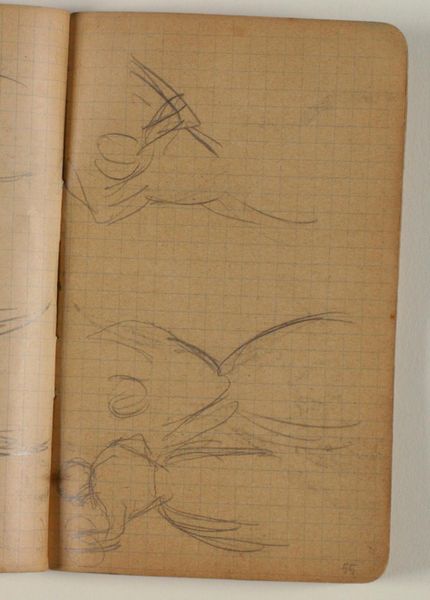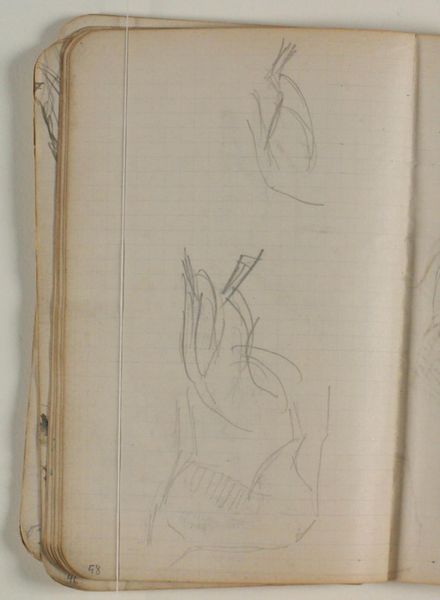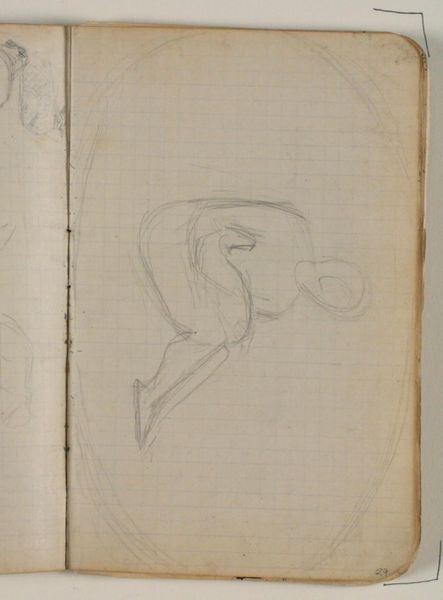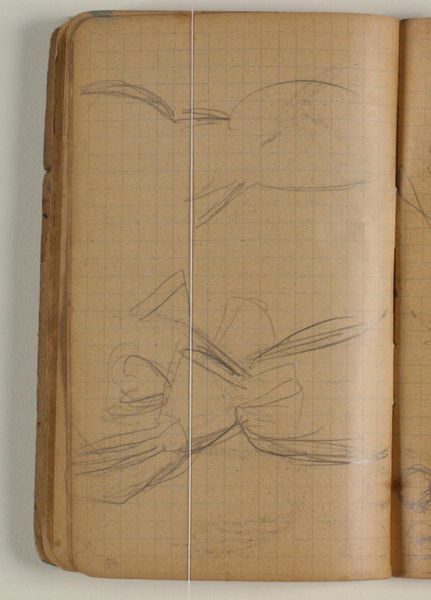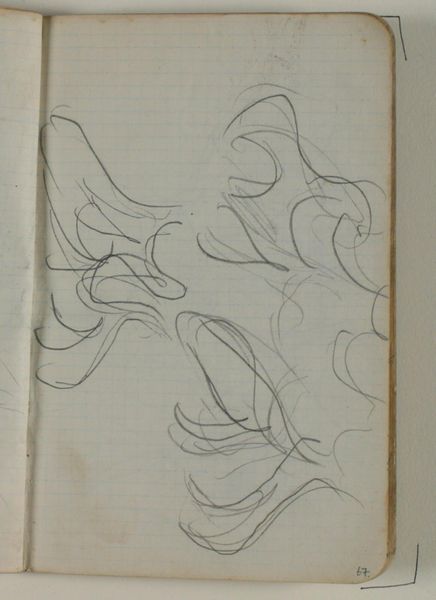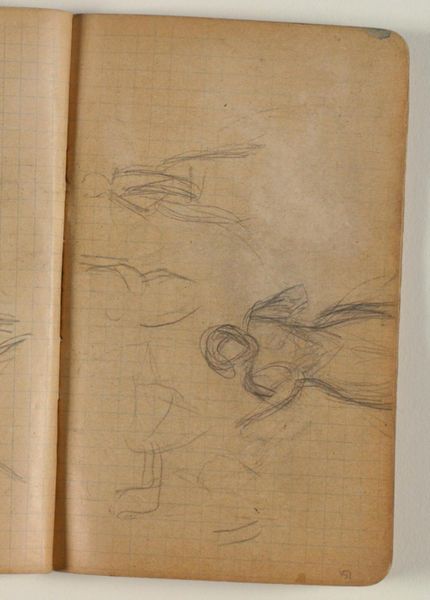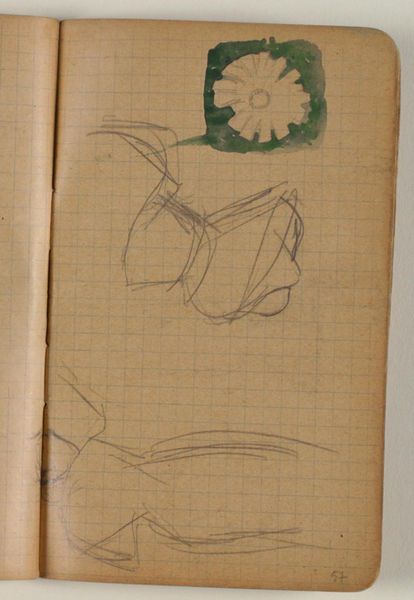
drawing, paper, pencil
#
drawing
#
pencil sketch
#
figuration
#
paper
#
pencil
#
line
Dimensions: 169 mm (height) x 109 mm (width) x 5 mm (depth) (monteringsmaal), 169 mm (height) x 109 mm (width) (bladmaal)
Curator: Welcome. We’re looking at Niels Larsen Stevns’ “Skitse af fisk,” or “Sketch of Fish,” created between 1905 and 1907. It's currently held at the SMK - Statens Museum for Kunst. Editor: Well, the immediate thing I notice is the apparent fragility of the piece. It’s just the barest outline of a fish, barely there, a whisper of form. You can almost feel the tooth of the pencil on that graph paper. Curator: The artist used a pencil on paper to create this delicate rendering. But let’s consider Stevns' wider body of work and the symbolic weight of depicting marine life. The era was marked by increasing industrial fishing practices and shifting social ecologies. How might this quick study reflect anxieties or fascinations related to humanity’s relationship with the sea? Editor: That’s an interesting way to look at it. I'm drawn more to the process. You see the grid on the paper. It provides a rigid structure that is offset by the curved lines of the drawing itself. Was the artist using the grid as a constraint or some method of planning? It shows an interesting dialogue between freedom and imposition in mark-making. The immediacy of pencil allows for such expressive capability. Curator: Indeed. I see that, and that also speaks to the power dynamics at play when considering historical and societal perceptions of nature, particularly as resources for economic and even colonialist desires. And the artistic implications in portraying a vulnerable being... Editor: Do you see vulnerability here? For me, this rapid, fluid capture highlights the artist’s practiced skills and material mastery in understanding form, even through something as basic as a graphite stick on pre-lined paper. I hesitate to immediately connect this sketch with broad sociological statements of the period. The hand reveals the skill, labor and physical experience of creating it, regardless of subject matter. Curator: It's this interplay that makes interpreting art so enriching, I suppose! Examining those physical traces, that visible skill, is crucial and I recognize that starting with form and its material history offers important accessibility. However, to dismiss the wider cultural significance of portraying fish during that era is to strip away an essential interpretive layer in accessing themes of power. Editor: An important tension, undoubtedly. In the end, the piece manages to pose multiple viewpoints despite its simplicity, right? Curator: Precisely! Thank you for joining me on this thought-provoking discussion. Editor: My pleasure. I came away from this encounter thinking a bit more broadly, which is always the best possible outcome.
Comments
No comments
Be the first to comment and join the conversation on the ultimate creative platform.
